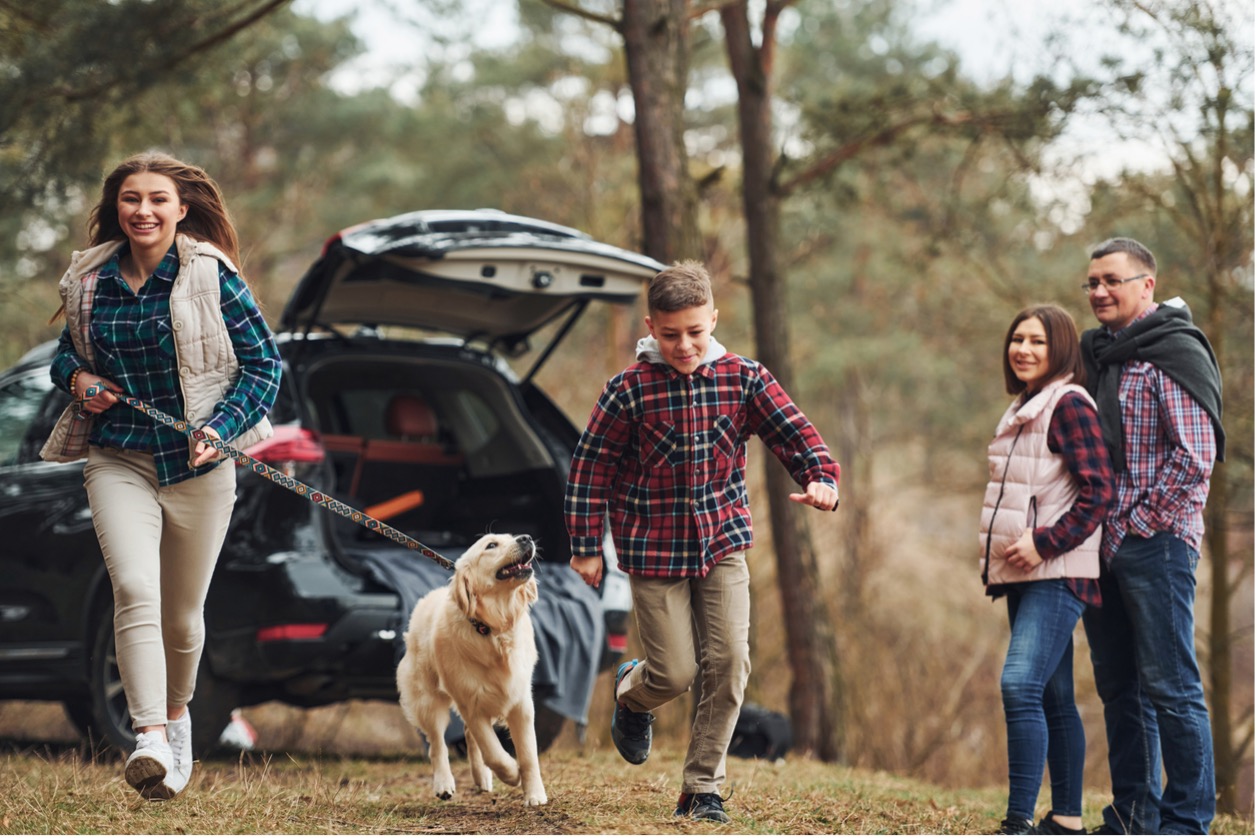Summertime is here! While there is plenty to do around Spring Creek, you might consider a trip out to Twin Falls in Idaho or seeing the Great Salt Lake in Utah. Wherever you may go or even if you stay local, these summer travel tips for your pets are essential to follow to keep your pets safe.
- Get Your Pet Checked Out by Us Before Your Summer Travel
Let us know if you plan to take your pet on a trip. We can ensure your pet has a clean bill of health. Your pet may need extra vaccinations or health certificates to travel, depending on your destination. Make sure you go over this with your vet. And while you are here, ensure your pet’s microchip is still working.
- Get Your Pet Microchipped and Registered
If you have not gotten your pet microchipped and registered, get this done before your trip. It takes very little time to get done, and it is worth it to save you and your pet the heartache should the unthinkable happen and your pet gets away from you while you are traveling. Additionally, have your pet wear a collar and name tag with your cell phone number.
- Check with Local Veterinarians
Before you leave town, check with local veterinarians at your destination to see if they will treat your pet during your travels if the need arises. Include emergency pet hospitals that take pets on an emergency basis. Thus, you will be prepared if you need a veterinarian while you are out of town.
- Keep Your Pet Secure While Traveling
According to a AAA survey, over 80 percent of drivers admit that they recognize the dangers of driving with an unrestrained pet, but only 16 percent use pet restraints.
If a car crashes at just 25mph, an unrestrained dog can be projected forward at a force equal to 40 times its weight. A large-size dog weighing 75 lbs., for example, can achieve an impact force of 3,000 pounds in a car crash, which could be a lethal blow for both a passenger and the pet.
If traveling in a car, put your pet in a safety restraint or carrier secured to the seat with the seat belt. For example, dog restraints use the vehicle’s built-in lower anchor and tethers for children (LATCH) systems. These are found only in the second and third rows of cars. Cats need to be in a carrier placed on the back seat and secured with the seat belt.
Don’t travel with your pet in the front seat; they can be a distraction to your driving. Also, if an airbag deploys while your pet is in the passenger seat (even in a crate), it might injure or kill your pet.
- Never leave Your Pet in the Car Alone!
Never leave your pet alone in the car, even for a brief pit stop. The temperature in a car can heat up rapidly. For example, on an 85-degree day, even with the windows opened, your car can reach 102 degrees in just 10 minutes. So, take your pet with you. If you are driving and need to stop for food, you can visit drive-through restaurants and take your food to a park, or a rest stop where you and your pet can enjoy your meal together (keeping your pet on a leash of course). You can also search the web before your trip for pet-friendly restaurants.
- Always Keep Your Pet on a Leash or Harness or in a Crate or Carrier
We don’t want to see any of our pet parents have to suffer the heartbreak of losing their pet while on vacation. Even if your pet is well-behaved, keep them on a leash or harness if you take them out of the car. A leash can protect them from traffic and other animals because they can’t run after them. Many places also have leash laws, which means that going on public property without your pet on a leash could result in a hefty fine.
Cats can be a bit trickier. Even if you don’t take your cat on walks with a harness and leash as a routine, it is best to train them to wear one if you travel with your cat. If harness and leash training isn’t possible, always keep your cat in the car until you reach your destination.
- Give Your Pet Rest Stops
Plan frequent rest stops so your pet can get out of the car to exercise and eliminate. As mentioned above, if you have a cat, don’t let it out of the vehicle if it is not on a leash. You can give them breaks in the car to use the litter box, drink water, etc. as long as you leave the windows up and doors shut so they cannot escape. Make sure to bring a litter tray with disposable tray liners and litter.
- Pack Enough Food and Water for Your Pet
Pets do best when kept on the same diet. Grocery stores along your route may not carry your pet’s brand. So, better to make sure you take enough food for your whole trip and take enough water. Also, don’t forget to pack food and water bowls.
- Avoid Car Sickness
If your dog or cat experiences motion sickness from the car, you can help them by taking steps ahead of the trip.
Start by taking short trips with your pet to get them used to travel. Use positive reinforcement to help them become less anxious about traveling in the car. You can even break it down to as easy as bringing them into the car, turning on the engine, and then getting them out of it and giving them a treat until you can build up to short trips. Familiarity with travel may help prevent car sickness.
There is also anti-nausea medication for pets. For example, Cerenia® is a veterinary nausea medication for pets. If you think your pet may need anti-nausea medicines, ask your vet during your wellness visit before your trip.
- Have a First Aid Kit
You can never be too prepared. Make sure you have a first aid kit, any medications they might need, and anything else you can think of that you might need in a pinch. Here are necessities to include in your emergency or first aid kit:
- Emergency Contact Card: phone numbers for your veterinarian, a 24-hour emergency clinic, and Animal Poison Control Center which is: (855) 764-7661 (a $75 incident fee does apply, but it can be the difference between life and death).
- Blunt-tipped scissors
- Bandages
- Sterile Eye Solution
- Latex or rubber gloves
- Plastic syringe for administering medications
- Medications for your pet
- Tweezers
- Styptic Powder: Styptic powder is used to stop mild bleeding, particularly if a nail has been broken or cut too close to the quick. Miracle Care Kwik-Stop styptic powder for dogs, cats and birds includes benzocaine, which helps ease pain.
- Digital Thermometer
- Calming chews or treats.
Final Words
Your pet’s health and well-being are our top priority. We want you and your pet to have a blast this summer and stay safe! We take pride in delivering friendly, personal veterinary care to every client-pet family that enters our front doors. Please don’t hesitate to ask us if you have any questions about summer travel with your pet or other safety questions.
Have a great summer!
Sincerely,
Dr. Kathryn Moriarty
Aspen Veterinary Clinic

